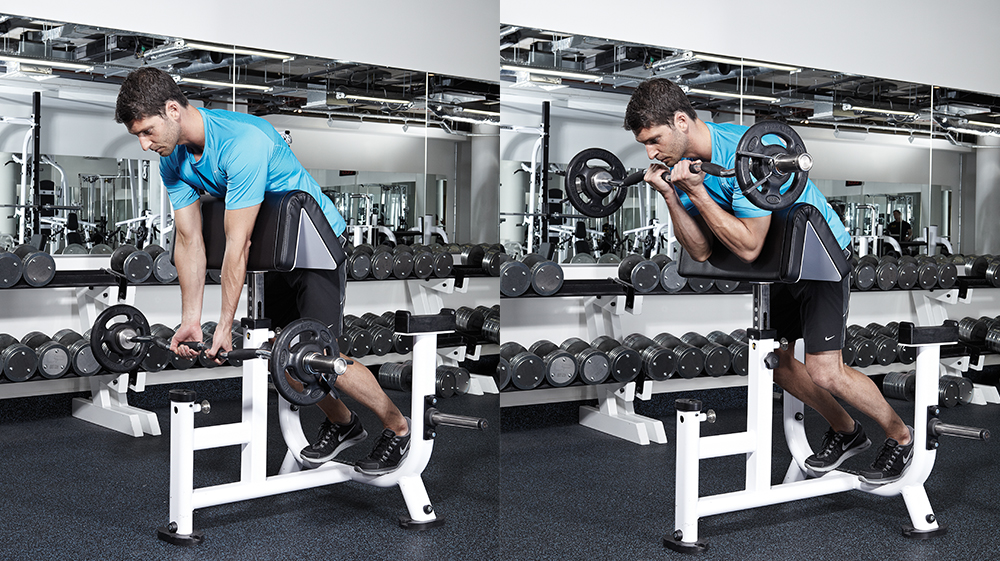How To Do The Spider Curl
Target your biceps with this variation on the classic curl

In This Series
- Biceps Curls Guide
- Dumbbell Curls
- EZ-Bar Curl
- Barbell Curl
- Concentration Curl
- Hammer Curl
- Preacher Curl
- Reverse Curls
- Zottman Curl
- Spider Curl
As we all know, one of the reasons that spiders are so scary is the bulging biceps they boast at the top of each of their eight legs. So you can hide and hope not to come across an arachnid, or you can fight fire with fire by bulking up your own biceps using the spider curl.
While all biceps curls are done with the same intention – to get bigger biceps – not all biceps curls are equally effective. The spider curl is particularly effective because it allows for a greater range of motion than most curls and ensures the biceps muscles are under tension for a long period.
How To Do The Spider Curl
You’ll need a barbell and a bench set at 45°. Lie face-down on the bench with your torso and stomach pressed against the back rest. Hold the bar under you using a supinated grip (palms facing up) with your hands shoulder-width apart. Slowly curl the bar up and pause for a second at the top of the move and squeeze your biceps, then lower the bar under control.
You can also use an EZ-bar or dumbbells, and you can perform the move on a preacher bench if you have access to one. If you do, approach the preacher bench from the side opposite the one you would normally and rest your arms on the flat pad where your chest would usually be.
In either scenario, having your arms hanging beneath your body is what allows for the greater range of motion of the move, but it does mean you have to exercise a lot of discipline to ensure you don’t enlist other muscles in the curl. Make sure your upper arms remain perpendicular to the ground throughout and only move your forearms as you curl the weights up and down. If you let your upper arms drift forwards your shoulders will do some of the work and take attention off the biceps, and you’re doing this for the biceps, right?
Get the Coach Newsletter
Sign up for workout ideas, training advice, reviews of the latest gear and more.

Nick Harris-Fry is a journalist who has been covering health and fitness since 2015. Nick is an avid runner, covering 70-110km a week, which gives him ample opportunity to test a wide range of running shoes and running gear. He is also the chief tester for fitness trackers and running watches, treadmills and exercise bikes, and workout headphones.









